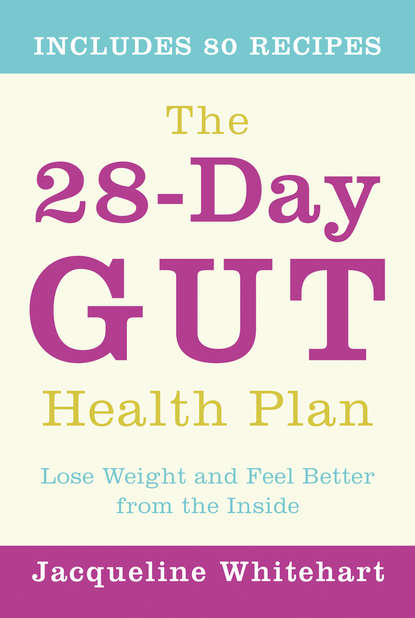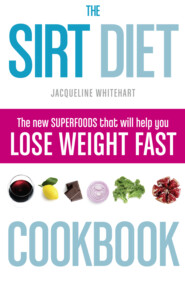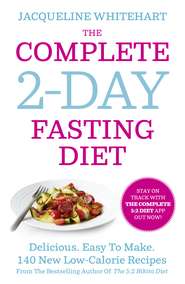По всем вопросам обращайтесь на: info@litportal.ru
(©) 2003-2024.
✖
The 28-Day Gut Health Plan: Lose weight and feel better from the inside
Автор
Год написания книги
2018
Настройки чтения
Размер шрифта
Высота строк
Поля
Lactose-free milk can now be found in any supermarket; it’s only a little bit more expensive than your standard semi-skimmed. What’s more, you can’t taste the difference, so it’s one of the easiest swaps ever. There are also lactose-free yogurts and ice cream but they are a little bit harder to find.
Onions and garlic
Onions and garlic are perhaps the hardest foods to avoid. If you think about it, the vast majority of our meals contain them in some form or another. If you’re buying pre-prepared food, it’s practically guaranteed. The problem is exacerbated by the fact that only a small quantity can set off an intolerance, so we need to be very careful indeed.
Garlic oil
Garlic oil is extra-virgin olive oil infused with garlic. Unlike garlic powder or pastes, the oil picks up the flavour of the garlic but without the troublesome ‘gassy’ molecules. This is because the garlic is not soluble in the oil, but it is in water. Garlic oil is brilliant because it can be used in practically any dish that requires garlic. Simply substitute 1 teaspoon of garlic oil for 1 clove of crushed garlic. Garlic oil is completely safe for sensitive tummies. You could also try chilli oil as a great way to add heat to a dish without the chilli.
Celery
Celery should be your go-to onion substitute in many dishes. It has a slightly milder flavour than onion. But if you add one or two chopped celery sticks in the place of an onion in a dish, particularly a traditional British dish like Cottage Pie (see here (#litres_trial_promo)), then you won’t notice the difference.
Asafoetida
If you’ve not heard of asafoetida before, you are not alone. It’s not a commonly used spice outside of the Indian sub-continent. A yellow spice, also called ‘hing’, it can be purchased cheaply and easily from the supermarket. In cooking it adds a mild onion or leek flavour to any dish. You need about a teaspoon as a substitute for an onion and it does add a yellow colour. It really is fantastic for adding warmth and depth of flavour to a dish. I’m a total convert and use it in many dishes.
THE PROBLEM WITH PROCESSED FOODS
Here’s the thing: processed foods are bad for you. We all know it. But they are immensely hard to avoid. They are the primary cause of the modern obesity epidemic and the root cause of so many food allergies and intolerances. Honestly, I would prefer it if you ate a huge slice of homemade chocolate cake, rather than one ‘healthy’ shop-bought granola bar.
Processing brings preservatives, colourants and flavourings. But it also has no regard for the delicate balance of our gut. The refining and sanitizing of the product, together with hidden sugars and unnatural chemicals, means that any processed or pre-prepared meal is an alien invader on the sensitive gut.
How do we define a processed food?
As a simple rule of thumb:
‘If it has an ingredients list and that list contains more than three ingredients, then that is a processed food.’
This isn’t as bad as it sounds! Obviously meat, cheese, milk and vegetables are all fine as they don’t have an ingredients list at all. And we are not ruling out food that has been tinned or processed for longer life, either. Tinned tomatoes, for example, are fine. As is smoked salmon. You’ve also got all those blessed timesavers like pre-cooked rice, ready-to-eat lentils or beans, or pasta. You can even have bread – as long as you make it yourself …
But we are getting ahead of ourselves. A lot of these foods need to be banished temporarily while we get on top of the current condition.
TIME FOR A REBOOT?
Think of the 28-Day Gut-Health Plan as a month of bed rest and recuperation for your gut. At the end of the programme, not only will your gut health have improved and your weight reduced, but other seemingly unrelated conditions such as migraines and eczema might also have cleared up.
‘The 28-Day Programme cuts out some real food … but only temporarily as a way of short-circuiting and rebooting the system.’
The ultimate goal of the plan is for you to be able to eat all the trigger foods in moderation, and the key to that is a life-long avoidance of processing. Yes, that means more cooking. And it means if you want a cake or a cookie, you’ll have to make it yourself. But there are plenty of ways to prepare healthy food quickly. And through the recipes and guidance here you’ll find speedy and simple ways to make real food from scratch in minutes.
DENIAL VS BALANCE
Some digestive issues come from an overindulgence in foods like wheat and dairy over time. You may need to deny yourself these foods during the plan because of many years of overindulgence. But when the plan has finished you should know much more about your trigger foods and how to avoid them. Foods that you thought were a problem might not be a trigger at all. And the majority of people find that their trigger foods can be incorporated on occasion with no ill effects.
Moderation is the key. A really big meal containing lots of your trigger foods or one which is exceptionally fatty or calorific might well trigger a problem.
‘Your gut is a sensitive soul who can easily take offence. Treat it nicely and it will reward you by behaving sensibly for many years to come
Вы ознакомились с фрагментом книги.
Приобретайте полный текст книги у нашего партнера:
Приобретайте полный текст книги у нашего партнера:









